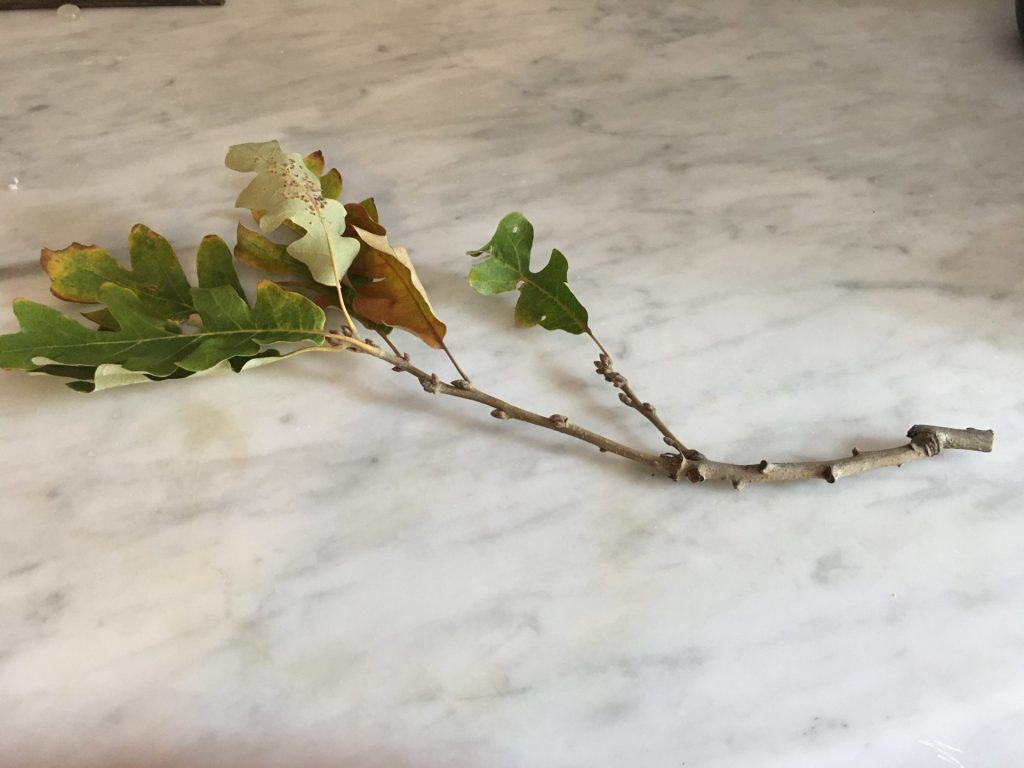
Hello,
I live in Mississauga ON, with conditions of sun and shade, and clay in the soil.
Our lovely, hugely tall tree that we inherited full grown 50 years ago, has been dropping leaves and twigs all summer long. The leaves brown and curl. The twig has a fine brown inner ring on the cut stem. Not Oak Wilt, Please!!
It’s very unlikely to be oak wilt, but could be another type of fungal disease, or possibly your tree is stressed.
Oak wilt is a fungus that afflicts oak trees, eventually killing them. The pathogen blocks the circulatory system of the tree, with symptoms starting in spring to early summer, starting near the top of the tree and resulting in extensive leaf drop by the middle of the summer. All types of oaks are susceptible (white oaks less so); white oaks generally die much more slowly than other varieties – they can survive for several years, but will eventually succumb. The good news is that, according to Ontario’s Invasive Species Centre “Oak Wilt” and Invading Species Awareness Program “Oak Wilt”, the wilt fungus has not reached Canada, although insect samples collected along the Ontario border have tested positive for DNA of the oak wilt pathogen and oak wilt has been detected near the Detroit/Windsor border. These websites provide helpful photos and detailed descriptions of signs and symptoms of the wilt. The Invading Species Awareness Program website provides a hotline number – you may wish to call them to ensure that the information online is current.
Your oak’s symptoms may be from oak anthracnose, a leaf spot or leaf blight disease that is also caused by a fungus, but one that does not seriously damage the tree. A cool, wet spring is an ideal environment that promotes development of anthracnose. You might see leaves dying back, starting on the lower parts of the tree, and moving upwards. The edges of young leaves may brown and the leaves may die or look deformed. The leaves may develop brown spots that can run together and result in large brown areas on the leaves. Leaves may look scorched. Generally, anthracnose does not cause much leaf drop. The fungus can survive on leaves, so it is important to remove dead/dying and fallen leaves and branches and dispose of these in garbage (not recycling as this may not kill the fungus). Keep the area around the tree clear of debris. If you water the tree, don’t water the leaves, this could make them more susceptible to the fungus.
See the following for additional information:
- Iowa State University Extension. Sick Oak Leaves – Serious or Superficial?
- The University of Massachusetts Amherst Extension’s Oak Anthracnose.
- Missouri Botanical Garden. A visual guide – problems of oak.
Another consideration is that this past spring and summer may have been quite stressful for your tree – especially the last couple of months, with August being so hot and humid, and September quite rainy. It may well bounce back to perfect health next spring. It sounds like you’ve been taking great care of the tree for many years, but it’s always important to make sure that the oak is getting enough water (oaks don’t like dry roots, and the browning leaves could result from a dry spell that occurred as far back as last fall) and that the soil is good (it may need nutrients, i.e., compost and mulch) and drains well so that the roots stay healthy.
It’s hard to tell much from your photo. Consider calling an arborist to check out your oak and put your mind at ease. Landscape Ontario maintains lists of arborists throughout Ontario. You might also want to wrap a brown leaf/stem in plastic wrap and take it to your local nursery to see if someone can help identify the problem.
All the best keeping your lovely white oak happy and healthy for the next 50 years!
September 27 2021

